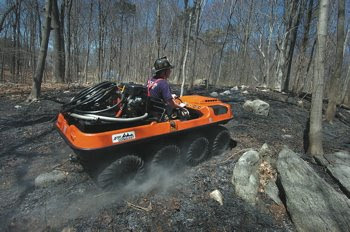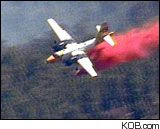Posted on Wildlandfire.com was this letter from the Forest Supervisor of the Okanogan-Wenatchee National Forest about the upcoming trial:
Okanogan-Wenatchee Employees:
The trial of our employee Ellreese Daniels is scheduled to begin May 5. He was indicted by a grand jury on four counts of involuntary manslaughter and seven counts of making false statements based on actions in his role as crew boss during the Thirtymile tragedy in 2001. I struggle with the reality of criminal charges against one of our own employees. I was not here in 2001, but today I feel the anxiety and fears of the firefighting community. I am also deeply saddened at the loss families experienced. Yet, in the midst of this swirl of strong emotion, we must go on.
I intend to support Ellreese by ensuring I do not interfere with a fair and speedy trial. All we can do for the families, employees and the American public is cooperate with the defense and prosecution by providing knowledgeable witnesses to testify honestly and truthfully. Then, let the justice system work based on the facts of the case. In the end, the judge and jury will decide the outcome of the trial.
This case will likely generate national media interest. If you want to speak with the media, then it is critical that you emphasize to them that you are speaking for yourself, as an individual, on you own time, not for the Forest Service or in any official capacity. It is your choice as an individual, representing your personal views to speak to a reporter. I offer this thought though. Ask yourself, “How will my comments influence the ability of the court to provide a fair and speedy trial”? If you are asked to comment as a Forest Service employee, please refer that request to Glen Sachet (503-808-2790) in the Regional Office.
Some of you will testify as witnesses for the defense or prosecution, or you will know someone who is testifying. The emotions of the tragedy may return. Don’t hesitate to talk with your line or staff officer, union representative, or contact the Employee Assistance Program for help.
I plan on attending as much of the trial as possible. When I’m not there, my representative will be. I will wear my uniform proudly in support of all employees and the Agency. I have identified a few employees that will serve a variety of roles in an official capacity at the trial, including keeping you informed of the proceedings. Others interested in attending can do so on their own time, not in an official capacity, with the use of leave pre-approved by their supervisor.
Maureen Hanson, Bobbie Scopa and I will be holding meetings at HQ and the Districts next week to discuss the upcoming trial and answer employee questions.
Finally, this has been and will continue to be a very emotional time. Please be sensitive and understanding of the feelings of others around you, and take extra care of yourselves.
Sincerely,
Becki





